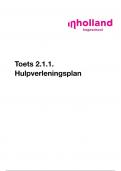Notes de cours
Opgeloste EXAMENvragen proefdierkunde II
- Cours
- Proefdierkunde
- Établissement
- Universiteit Gent (UGent)
Samenvatting van alle lessen van de gastprofessoren en antwoorden op vragen waaruit zeker de examenvragen zullen komen.
[Montrer plus]












